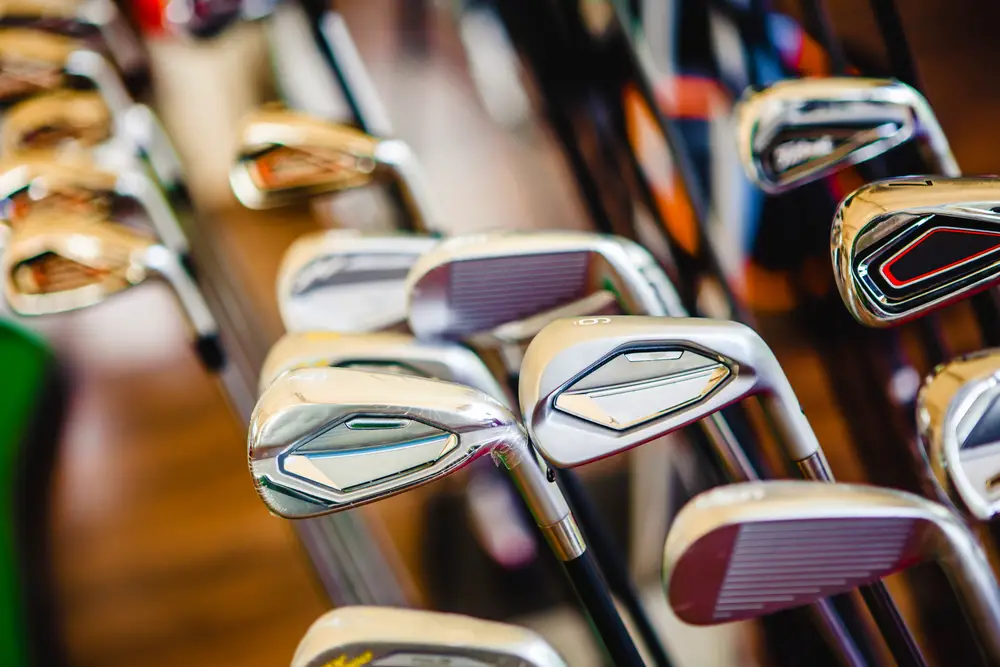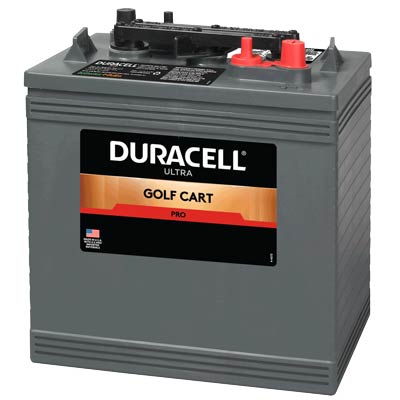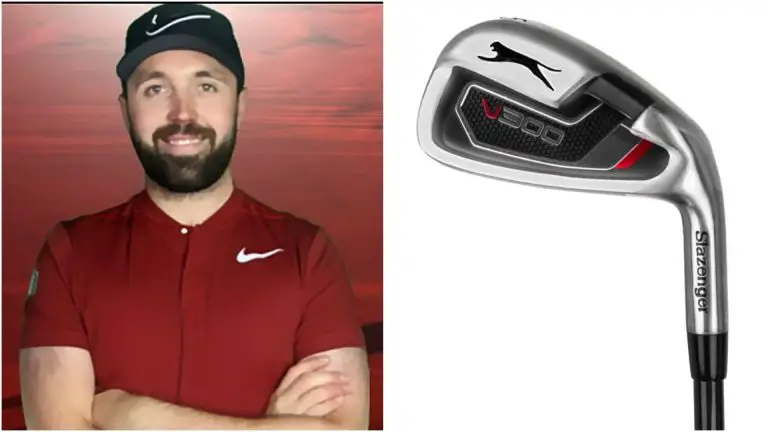How Long Do Golf Clubs Last

Golf clubs are not just mere tools for hitting golf balls; they are an extension of a golfer’s skill and precision. Whether you’re a seasoned player or a beginner, you’ve probably wondered about the lifespan of your golf clubs. How long can they withstand countless swings, rough terrains, and the test of time?
Understanding the longevity of golf clubs is crucial for making informed decisions about maintenance, upgrades, and replacements. It allows you to plan and allocate resources wisely, ensuring that you always have reliable clubs by your side on the course.
In this comprehensive guide, we delve into the intriguing world of golf club lifespan. We explore the factors that influence how long golf clubs last, ranging from the quality of materials used in their construction to the frequency and intensity of use. We also discuss the signs of wear and tear to look out for, along with practical maintenance tips to extend their lifespan.
So, whether you’re curious about the durability of your trusty irons or the longevity of your prized driver, this guide provides valuable insights and guidance to help you understand how long golf clubs can endure and how to make them last even longer.
Get ready to embark on a journey of discovery as we unravel the secrets behind the lifespan of golf clubs and equip you with the knowledge to optimize your golfing experience.

The Lifespan of Golf Clubs: Factors to Consider
Golf clubs, like any other equipment, have a finite lifespan influenced by several key factors. Understanding these factors can help you determine how long your golf clubs will last and when it may be time for replacements or upgrades.
Material Quality and Durability
How does the quality of materials affect the lifespan of golf clubs?
The quality of materials used in golf club construction plays a significant role in determining their durability and lifespan. Higher-quality materials, such as forged steel or titanium, tend to be more resilient and long-lasting compared to lower-quality materials.
For example, irons made from forged steel undergo a meticulous forging process that enhances their strength and durability. On the other hand, clubs made from cast iron may be more prone to wear and damage over time. Understanding the materials used in your golf clubs can provide insight into their expected lifespan.
Which materials are known for their durability?
Several materials are renowned for their durability and longevity in golf club manufacturing. These materials include:
| Material | Description |
|---|---|
| Titanium | Titanium clubheads are lightweight, strong, and resistant to corrosion, offering excellent longevity. They are commonly used in drivers and fairway woods. |
| Stainless Steel | Stainless steel is known for its durability and resistance to rust, making it a popular choice for irons and wedges. |
| Graphite | Graphite shafts are lightweight and flexible, providing excellent shock absorption and enhancing club longevity. They are commonly used in drivers, fairway woods, and hybrid clubs. |
By selecting golf clubs made from high-quality and durable materials, you can ensure a longer lifespan for your equipment.
Frequency and Intensity of Use
How does the frequency of play impact the lifespan of golf clubs?
The frequency of play directly affects the wear and tear experienced by golf clubs. The more frequently you play, the more stress is placed on the club’s components, potentially shortening their lifespan.
Consider two golfers—one who plays several times a week and another who plays once a month. The golfer who plays more frequently will subject their clubs to more swings, impacting the clubface, shaft, and grips. Over time, this repeated stress can lead to performance degradation and a shorter overall lifespan for the clubs.
What effect does the intensity of use have on golf club longevity?
In addition to frequency, the intensity of use can also impact the lifespan of golf clubs. Intensity refers to factors such as swing speed, contact with the ground, and force applied during shots.
For example, a golfer who frequently plays on a course with hard, compacted surfaces or encounters challenging rough may experience increased wear on their clubs. Similarly, golfers with high swing speeds may put more stress on the clubface and shaft, potentially affecting their durability.
Understanding the impact of both frequency and intensity of use can help you gauge the expected lifespan of your golf clubs and make informed decisions about maintenance and potential replacements.
Signs of Wear and Tear: Identifying When to Replace Golf Clubs
Over time, golf clubs undergo natural wear and tear due to regular use and exposure to the elements. Recognizing the signs of aging and deterioration can help you determine when it’s time to replace your golf clubs.
Common signs of aging in golf clubs
What are some visual indications of wear and tear?
Visual cues can provide valuable insights into the condition of your golf clubs. Look out for the following signs of aging:
- Worn clubface: The clubface may develop visible signs of wear, such as scratches, dings, or worn grooves. These imperfections can affect the club’s ability to generate spin and control the ball.
- Frayed or worn grip: The grip of a golf club can wear out over time due to hand oils, dirt, and general use. If you notice significant wear, such as fraying, smooth spots, or loss of tackiness, it may be time to replace the grip.
- Shaft damage: Inspect the shaft for any signs of cracking, splintering, or bending. Damaged shafts can impact swing consistency and overall performance.
How can performance issues signal the need for replacement?
Performance degradation is another indicator that your golf clubs may need replacing. Pay attention to the following performance issues:
- Loss of distance: If you consistently experience a significant decrease in distance compared to your previous shots, it could be a sign of club wear or a decline in shaft performance.
- Inconsistent ball flight: Uneven ball flight, such as hooks, slices, or excessive fade/draw, may indicate clubface issues or shaft problems.
- Lack of responsiveness: If you notice reduced responsiveness or feel when making contact with the ball, it could be a sign of worn clubface or diminished shaft flex.
Addressing these visual and performance indicators in a timely manner can help maintain the effectiveness and enjoyment of your golf game.
When should golf clubs be replaced?
Determining the right time to replace golf clubs involves considering several factors:
What factors should be considered when deciding to replace golf clubs?
- Extent of wear and damage: Assess the overall condition of your clubs, taking into account the severity of wear, damage, or deterioration. If the damage is extensive and affecting performance, it may be time for replacement.
- Frequency and intensity of play: Consider how frequently you play golf and the level of intensity you exert on your clubs. If you’re a regular player or play in competitive settings, your clubs may experience more wear and require replacement sooner.
- Technological advancements: Advancements in golf club technology can provide performance enhancements that may justify upgrading your equipment. Newer clubs may offer improved forgiveness, distance, or accuracy compared to older models.
How can performance improvements justify upgrading golf clubs?
When evaluating the need for replacement, consider whether newer clubs can significantly enhance your performance and enjoyment of the game. Upgrading to clubs with advanced features, such as adjustable weights, optimized clubface designs, or improved materials, can lead to more consistent shots and better results on the course.
Ultimately, the decision to replace golf clubs should be based on a combination of visual wear, performance issues, and the desire for potential performance gains offered by newer equipment.
Maintenance and Care: Extending the Lifespan of Golf Clubs
Proper maintenance and care can significantly extend the lifespan of your golf clubs, ensuring optimal performance and longevity.
Cleaning and Storage Practices
What are the recommended cleaning methods for golf clubs?
Regular cleaning is essential for keeping your golf clubs in top condition. Follow these guidelines for effective cleaning:
- Clubheads: Use a soft-bristle brush or toothbrush to remove any debris or dirt from the clubheads. Avoid using abrasive materials that could scratch or damage the surface. Wipe the clubheads with a damp cloth to remove any remaining dirt or grass stains.
- Grips: Clean the grips with a mild soap and water solution. Gently scrub the grips with a brush or cloth, then rinse thoroughly and dry them with a towel. This helps maintain their tackiness and prevents slippage during swings.
- Shafts: Wipe down the shafts with a damp cloth to remove any dirt or sweat. Pay attention to the areas around the grip and clubhead where buildup may occur. Dry the shafts thoroughly to prevent moisture-related issues.
How should golf clubs be stored to prevent damage?
Proper storage is crucial for protecting your golf clubs when they are not in use. Consider the following storage tips:
- Golf bag: Invest in a quality golf bag with individual club compartments. This helps prevent clubheads from knocking against each other, minimizing the risk of damage. Make sure the bag has a rain cover to shield the clubs from moisture.
- Clubhead covers: Use clubhead covers for woods and putters to prevent scratches, dings, and other damage during transport or storage. These covers provide an extra layer of protection.
- Dry environment: Store your golf clubs in a dry place to avoid exposure to humidity, which can lead to rust or corrosion. Avoid storing them in areas prone to temperature extremes, such as a car trunk or a damp basement.
By implementing regular cleaning routines and adopting proper storage practices, you can prevent unnecessary damage and extend the lifespan of your golf clubs.
Regular Inspections and Maintenance
How often should golf clubs be inspected for potential issues?
Regular inspections allow you to identify and address any potential issues before they escalate. Perform the following inspections:
- Clubheads: Inspect the clubheads for signs of wear, including worn grooves, dings, or cracks. Check for loose or damaged ferrules (the small collar where the shaft meets the clubhead). Address any issues promptly to maintain optimal performance.
- Grips: Monitor the condition of your grips regularly. Look for signs of wear, such as cracks, smooth spots, or loss of tackiness. Consider regripping if necessary, as worn-out grips can compromise your grip and swing control.
- Shafts: Examine the shafts for any visible damage, such as cracks, splintering, or bending. Pay attention to the area near the clubhead and the grip, as these are common spots for wear and tear. Seek professional assistance if you suspect any significant damage.
What maintenance routines should be followed to prolong the lifespan of golf clubs?
In addition to regular inspections, the following maintenance routines can help extend the lifespan of your golf clubs:
- Clubhead cleaning: After each round, wipe down the clubheads with a damp cloth to remove dirt, grass, or debris. Dry them thoroughly before storing.
- Grip cleaning: Clean the grips periodically using mild soap and water. This removes oils, dirt, and sweat buildup, ensuring they remain tacky and functional.
- Regripping: Consider regripping your clubs when the grips become worn or lose their tackiness. New grips provide better control and enhance the feel of your swings.
- Professional maintenance: Schedule periodic professional club fittings or tune-ups. Professionals can assess your clubs, make adjustments, and provide expert advice on optimizing their performance.
By incorporating regular inspections and following proper maintenance routines, you can maximize the lifespan and performance of your golf clubs.
Different Types of Golf Clubs: Lifespan Expectations
Different types of golf clubs have varying lifespans depending on their design, materials used, and the level of wear they experience during play. Understanding the average lifespan expectations for each type of golf club can help you plan for replacements and make informed decisions about your golf equipment.
Drivers and Woods
What is the average lifespan of drivers and woods?
Drivers and woods typically have a longer lifespan compared to other clubs. With proper care and maintenance, they can last for several years. However, advancements in technology and changes in personal preferences may lead golfers to upgrade their drivers and woods more frequently.
The clubhead of a driver is subjected to high impact forces during each swing, especially when hitting off the tee. As a result, the clubface may wear out over time, impacting performance. Upgrading to a newer driver with enhanced features, such as improved forgiveness or adjustability, can offer significant performance benefits.
Woods, including fairway woods and hybrid clubs, also experience wear on the clubface and shaft. However, their lifespan can be extended with proper maintenance and care. Regularly cleaning the clubheads, inspecting the shafts, and addressing any signs of wear or damage can help maintain their performance and longevity.
Irons and Wedges
How long do irons and wedges typically last?
Irons and wedges are essential clubs in a golfer’s bag, used for approach shots, chipping, and pitching. These clubs tend to have a shorter average lifespan compared to drivers and woods due to the frequency of use and the impact forces exerted during shots.
The clubfaces of irons and wedges can wear down over time, affecting their ability to generate spin and control the ball. Grooves on the clubface may become less sharp, resulting in reduced spin rates and decreased stopping power on the greens. While some wear is normal, excessive wear can compromise performance.
To extend the lifespan of irons and wedges, regular cleaning is crucial. Removing dirt and debris from the clubfaces and grooves after each shot helps maintain optimal performance. Additionally, inspecting the shafts for any signs of damage and addressing grip wear or deterioration can contribute to their longevity.
Putters
What is the average lifespan of putters?
Putters are the clubs primarily used on the greens for precise and delicate strokes. They generally have a longer average lifespan compared to other clubs because they are not subjected to the same impact forces as drivers, woods, irons, and wedges.
The durability of putters is largely dependent on the materials used and the quality of construction. High-quality putters made from durable materials, such as stainless steel or milled aluminum, can last for many years with proper care and maintenance.
However, personal preferences and advancements in putter technology may prompt golfers to upgrade their putters more frequently. Newer putters often feature innovative designs, alignment aids, and weight distribution systems that can improve putting performance and enhance feel.
Regular cleaning, inspection of the clubhead, and grip maintenance are essential for prolonging the lifespan of putters. Additionally, storing putters in a protective headcover and avoiding unnecessary impacts or drops can help maintain their condition.
Understanding the average lifespan expectations for different types of golf clubs can guide your decision-making process when it comes to replacements and upgrades. By properly maintaining and caring for your clubs, you can extend their lifespan and continue to enjoy optimal performance on the golf course.
Choosing the Right Golf Clubs for Longevity
When selecting golf clubs, considering factors that contribute to their longevity can help you make informed decisions and maximize your investment. Here are some key factors to keep in mind:
- Material quality: Opt for golf clubs made from high-quality materials known for their durability. Clubs constructed with premium materials are more likely to have a longer lifespan and provide consistent performance.
- Design features: Look for clubs with design features that enhance durability and longevity. This may include reinforced clubheads, durable coatings, or innovative engineering techniques that improve resistance to wear and tear.
- Brand reputation: Research reputable golf club manufacturers known for producing high-quality and long-lasting clubs. Established brands often invest in research and development to ensure their clubs stand the test of time.
- Custom fitting: Proper club fitting ensures that you are using clubs that are suited to your swing characteristics and playing style. When clubs are properly fitted, they are more likely to perform optimally and last longer.
- Maintenance requirements: Consider the maintenance needs of different clubs before making a purchase. Some clubs may require more frequent maintenance or specialized care to maintain their performance and longevity.
- Personal preference: Ultimately, choose clubs that you feel comfortable and confident using. When you have confidence in your equipment, you are more likely to take better care of it, leading to increased lifespan.
By considering these factors, you can select golf clubs that not only suit your playing style but also have the potential for a longer lifespan with proper care and maintenance.
Conclusion
Understanding the lifespan of golf clubs is essential for making informed decisions about maintenance, replacements, and upgrades. Factors such as material quality, frequency and intensity of use, and proper maintenance routines all contribute to the longevity of golf clubs.
Regular inspections, proper cleaning, and storage practices help extend the lifespan of golf clubs by preventing unnecessary wear and damage. Identifying signs of wear and understanding when to replace clubs ensures optimal performance on the course.
Remember to choose clubs that align with your preferences and prioritize durability. By selecting high-quality clubs and providing them with the care they deserve, you can enjoy extended longevity and continued improvement in your golf game.
Investing in the right golf clubs and maintaining them properly will ensure that they remain reliable companions for countless rounds, allowing you to focus on what matters most—enjoying the game and achieving your best shots.






